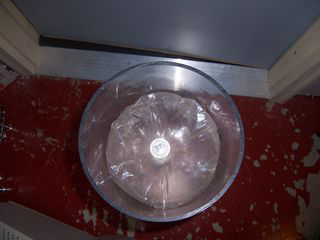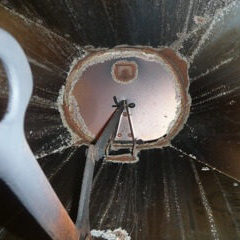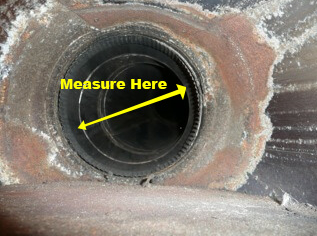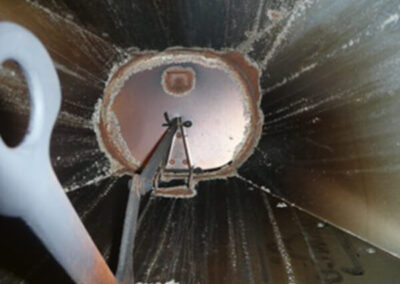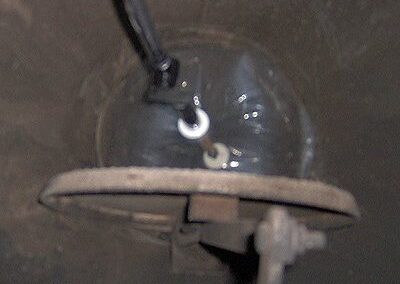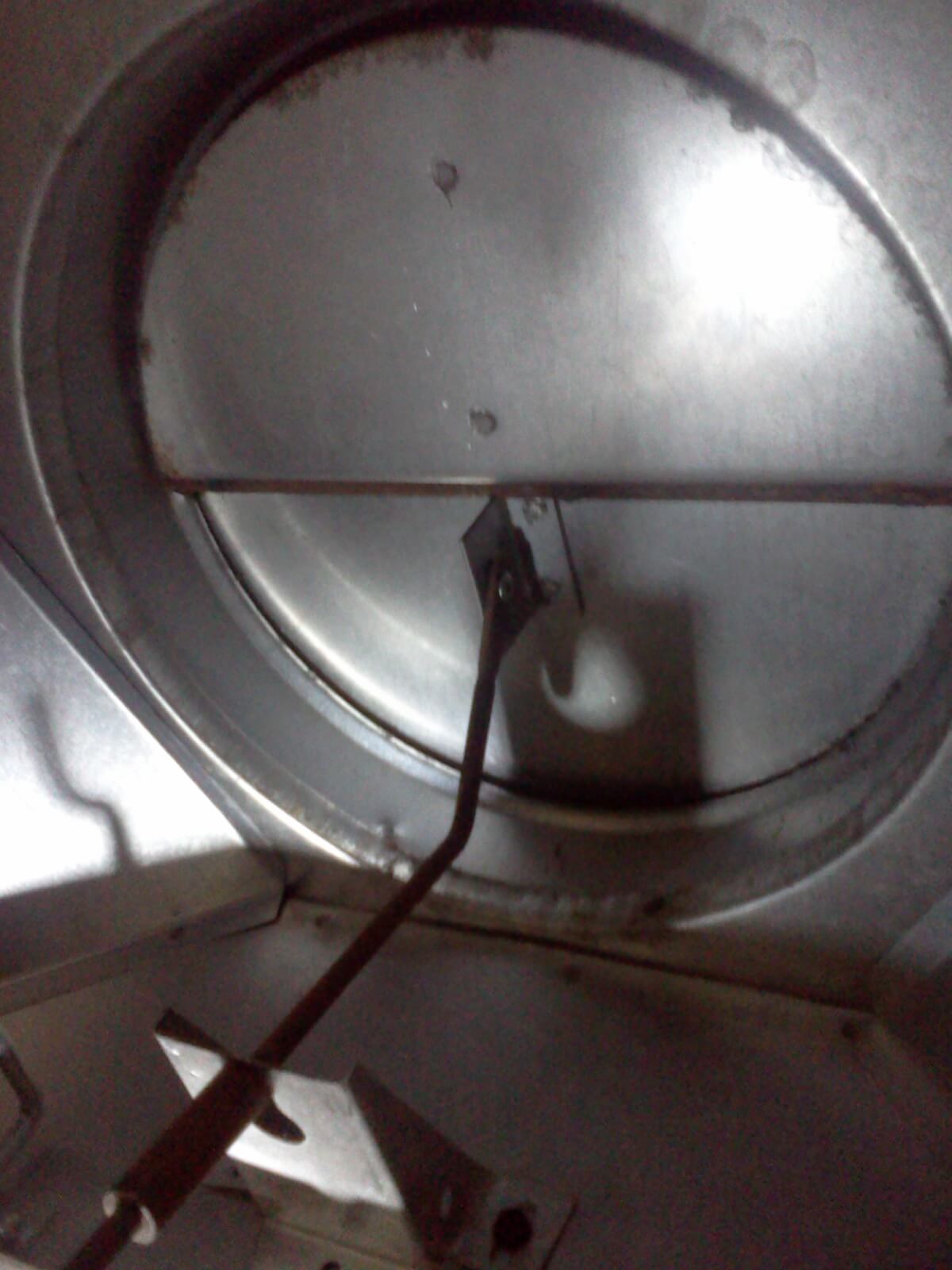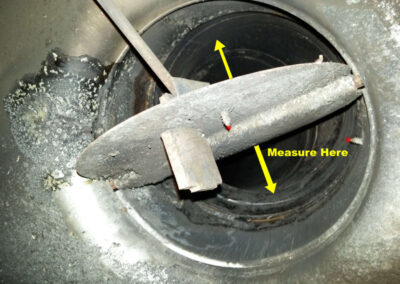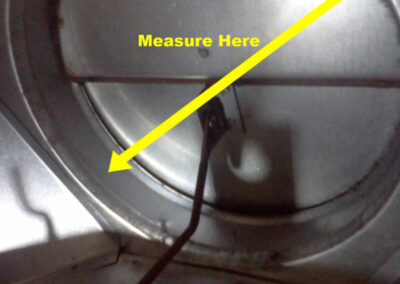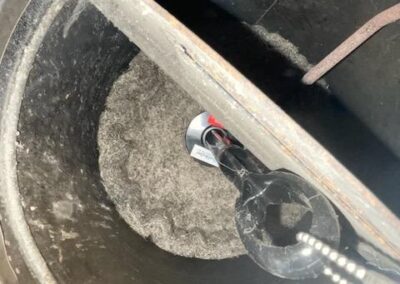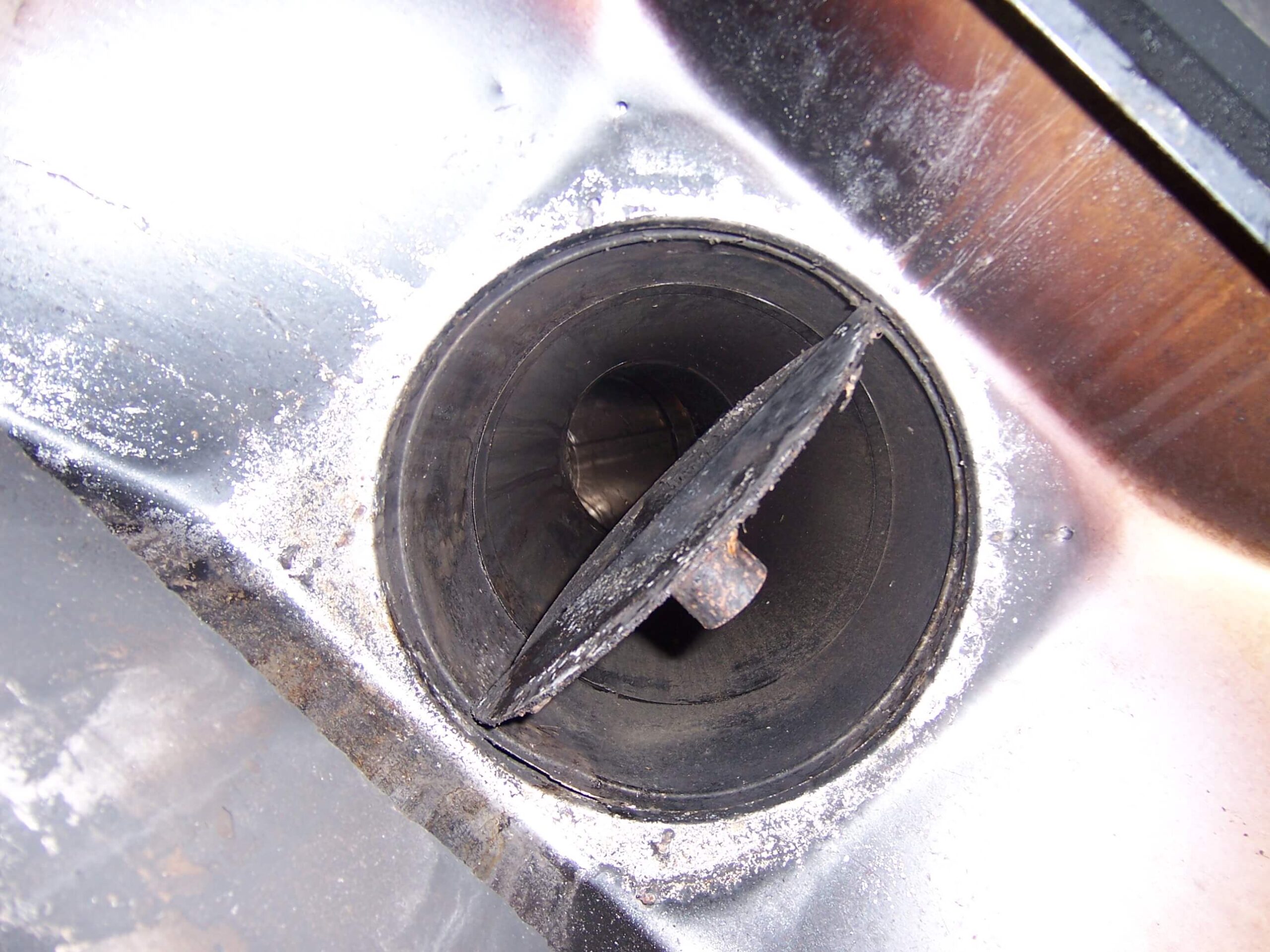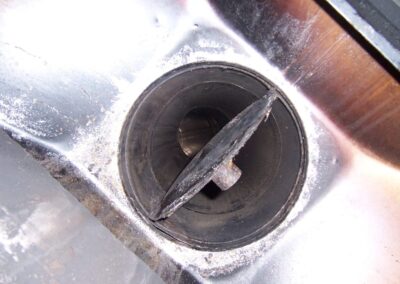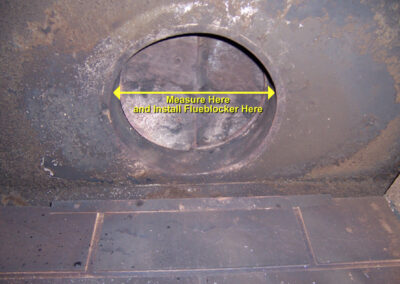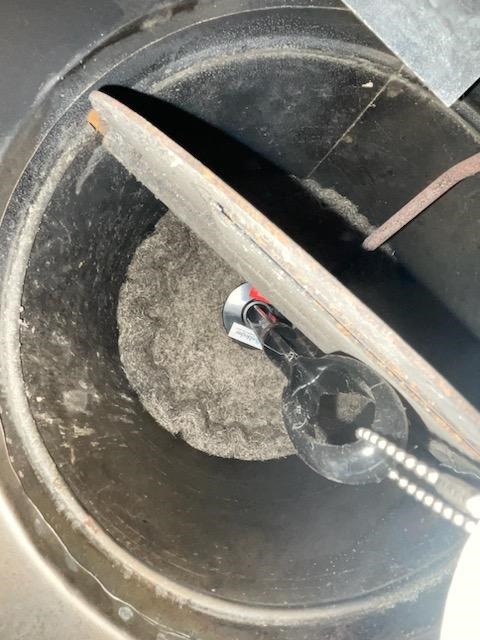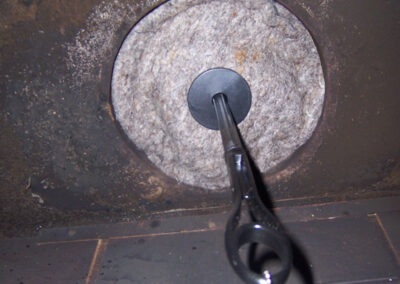Fireplace #3: Butterfly Damper in a Round Chimney with a Handle on the Face of the Damper
OK, so you have a butterfly damper with a hinged handle attached to it. Sometimes these are inset into the chimney a few inches (image 3-2). Sometimes they are right at the bottom of the chimney, and the chimney widens out to the firebox immediately below the damper (image 3-1). These sheet metal butterfly dampers pivot in the middle like a carburetor choke, and are often in bad shape, rusty and warped. After-all they are just made of sheet metal, and they are in a caustic and heated environment.
Wood Burning Fireplace Users:
Option 1: If you have space below your damper.
If you are lucky enough to have a small 1”or 2” vertical bit of chimney pipe sticking down below the closed damper before the pipe opens to the firebox (image 3-2). This is the perfect spot for a Round Flueblocker. You can tuck the Flueblocker against the face of the damper. But you will have to cut a slit in the edge of the wool pad for the damper handle to come down through.
Just make a diameter measurement of the hole below the damper (image 3-2), then buy a Flueblocker that will fit in that hole. Or buy one that is a bit big for the hole, since you can then trim it down to fit with a sharp pair of scissors. Here are some examples:
Example 1: You measure 8” diameter = You buy a 9” Round Flueblocker
Example 2: You measure 9” diameter = You buy a 9” Round Flueblocker
Example 3: You measure a 11” diameter = You buy a 12” Round Flueblocker.
Note: Flueblockers are physically a little bit larger than their labeled size. This is so they can press in to fit and hold in place by pressure tension.
Option 2: If you do not have space below your damper and it immediately opens to the firebox.
If there is no room below the damper (image 3-1), you will have to go with a Flueblocker ABOVE the damper (image 3-3) The wool pad is semi-rigid, so getting it up past the damper can take some pivoting and maneuvering. You may want an extra 6″ handle extender to make your handle longer.
Gas Log Users: If you have a gas log set in this fireplace, you have a decision to make.
Here are your two options:
- You can turn off the gas line to this fireplace and put in a small 9×9 or 12×12 Chimney Balloon just above the damper. This way if a house guest come over and fires up the gas logs without asking, he won’t back up exhaust fumes into the house. The Chimney Balloon will burst and fall out, since it is designed to do that. The downside to this, is the Chimney Balloon is an inflatable and not as durable as a Flueblocker.
- You can turn off the gas line and remove or fully disable the gas log set and then put in a Flueblocker. The Flueblocker does not burn away if you light a fire under it. If you do light a fire under a Flueblocker fumes will back up into the house. DO NOT do that!
